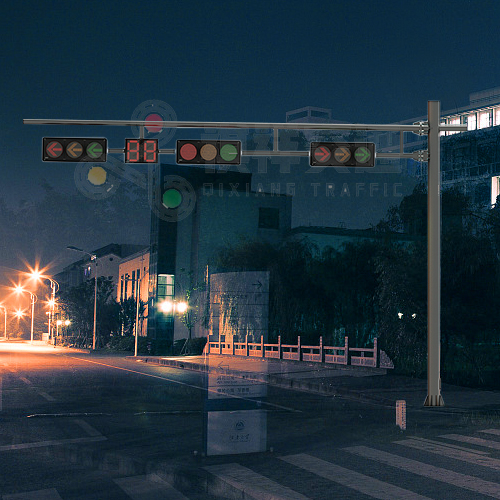Traffic light poles are an essential part of our daily lives. They are stationed on nearly every street corner, directing traffic and ensuring road safety for pedestrians and drivers. While we may not give these sturdy structures much thought, their thickness plays a major role in their durability and ability to withstand a variety of environments and unforeseen circumstances. In this article, we delve into the topic of traffic light pole thickness and explore its importance and practical considerations.
Standard thickness of traffic light poles
First, let’s discuss the standard thickness of traffic light poles. Traffic light poles are usually made of steel or aluminum, both of which are known for their durability and sturdiness. The thickness of these light poles varies based on a number of factors, including location, weather conditions, and the type of lighting fixtures they support.
Generally, traffic light poles range in thickness from 0.25 to 0.75 inches (0.64 to 1.91 cm). However, this range can be adjusted according to specific requirements. For example, in areas prone to severe weather conditions such as hurricanes or heavy snowfall, traffic light poles may have greater thickness to enhance their stability and ability to withstand strong winds or heavy snowfall.
From a practical standpoint, the thickness of a traffic light pole is critical to ensuring its structural integrity. Thicker poles can withstand greater wind forces and other external factors, such as accidental vehicle collisions. This thickness helps prevent the pole from buckling or collapsing, minimizing the risk of injury or damage to nearby infrastructure. Given the critical role traffic light poles play in controlling traffic flow, thicker poles can significantly reduce the disruption caused by maintenance and replacement.
In addition, the thickness of these poles is designed according to the weight and height of the lighting equipment they support. Traffic lights come in different sizes and weights, and the thickness of the pole needs to be proportional to adequately support and balance the weight of the light.
While traffic light poles must be of the proper thickness, it is also important to maintain them regularly to ensure their longevity and functionality. Routine inspections by the city or Department of Transportation can help identify any signs of corrosion, weakening of pole material, or other signs of damage that could compromise its structural integrity.
In my opinion
The thickness of traffic light poles is a key factor in promoting road safety and efficient traffic management. By designing light poles with sufficient thickness, we can minimize the risk of accidents caused by malfunctioning or falling traffic lights.
Also, I appreciate the attention to detail in maintaining road infrastructure. The consistent focus on the safety and durability of traffic light poles demonstrates our commitment to ensuring the well-being of citizens and visitors. By understanding the important role traffic light poles play in our daily lives, we can truly appreciate the efforts that engineers and city authorities go into maintaining and improving our transportation systems.
In conclusion
Traffic light poles are not just ordinary structures that we pass by every day. Their thickness is carefully determined to withstand different environmental conditions and support the lighting installed on them. From a practical point of view, thicker poles can contribute to road safety by reducing the risk of accidents and minimizing traffic interruptions due to maintenance needs. As citizens, we can appreciate the efforts of authorities to ensure the durability and functionality of these oft-neglected components of our transportation infrastructure.
Qixiang has traffic light pole for sale, welcome to contact us to read more.
Post time: Jul-21-2023







